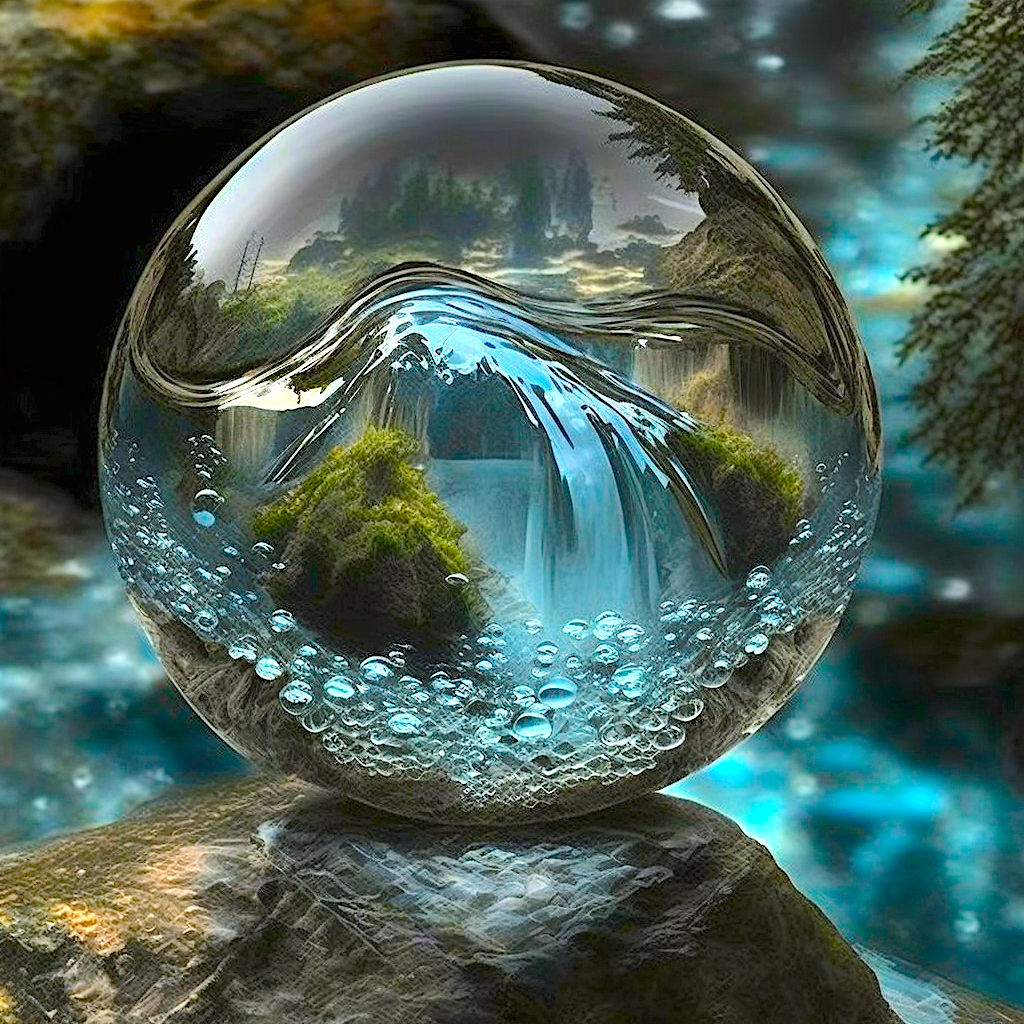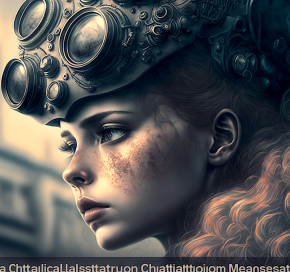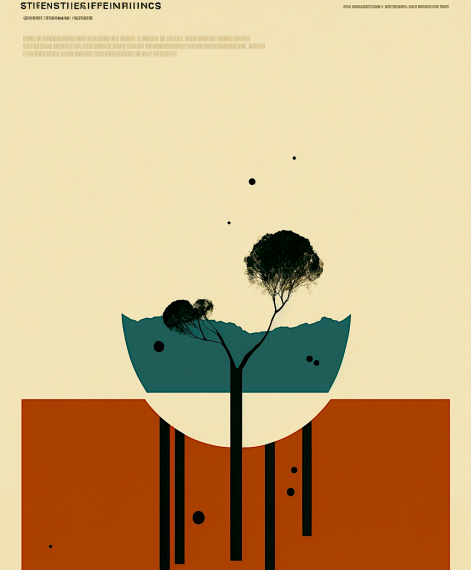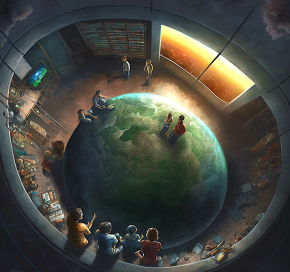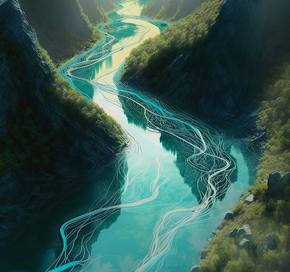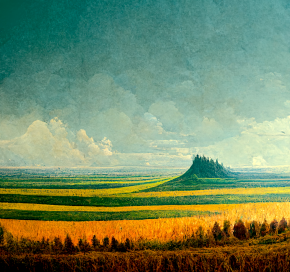Blending data visualization and storytelling, the artificial intelligence tool midjourney provides a method to include compelling illustrations in social network and social media posts about Critical Zone research.
BIG IDEAS
Imagining concepts
These three images are previously unseen results from content generation work sessions where our team generated images to highlight research presented by Big Data Cluster members at the American Geophysical Union Annual Fall Meeting in 2022.

 Big Data
Big Data